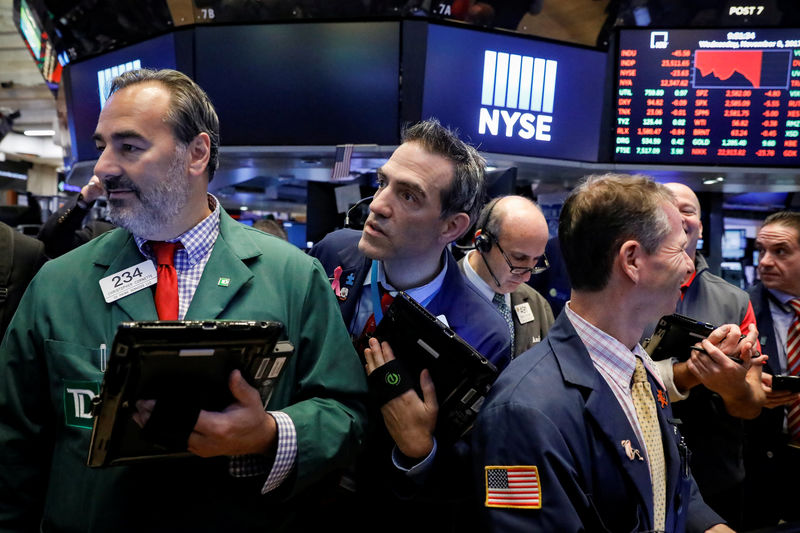By Sinead Carew
NEW YORK (Reuters) - The euro was set for its strongest session in more than four months on Tuesday, boosted by strong economic growth in Germany, but world stocks fell for the fourth straight day as oil prices fell and investors worried about U.S. tax reform.
U.S. Treasury two-year note yields climbed to a nine-year peak while long-dated debt yields fell, flattening the yield curve flattened for a second straight day, while investors braced for a Federal Reserve December rate hike.
In Germany, a 0.8-percent third-quarter growth reading beat forecasts and showed the economy expanding at annualised rates of more than 3 percent.
The dollar index fell 0.69 percent, with the euro up 1.09 percent to $1.1792, marking the euro's biggest one-day gain against the greenback since June 27.
"Most of what appears to have driven the euro's strength was the solid German data earlier this morning," said Eric Viloria, currency strategist at Wells Fargo (NYSE:WFC) Securities in New York.
Stock investors sought updates on rival U.S. tax reform plans in the hope of a boost to corporate earnings. The Senate Finance Committee continued to work on its proposal while the House of Representatives prepared to vote on its version as early as Thursday.
"As proposed, both plans, but especially the House package, would be good for corporate America. There's uncertainty whether anything is going to be passed or how much compromise is going to occur," said J. Bryant Evans, portfolio manager at Cozad Asset Management, in Champaign, Illinois.
Senate Republican leader Mitch McConnell threw his support behind including a repeal of the Obamacare mandate for individual health insurance in the Senate's bill.
After an upcoming break for the Nov. 23 U.S. Thanksgiving holiday, there are only 12 legislative days before year-end.
On Wall Street, the energy sector was the biggest drag while defensive sectors such as utilities and consumer staples performed the best.
“People are looking for yield across the globe so potentially there’s foreign flows going into bond proxies,” said Paul Zemsky, chief investment officer, Multi-Asset Strategies and Solutions at Voya Investment Management in New York.
The Dow Jones Industrial Average fell 30.23 points, or 0.13 percent, to 23,409.47, the S&P 500 lost 5.97 points, or 0.23 percent, to 2,578.87 and the Nasdaq Composite dropped 19.72 points, or 0.29 percent, to 6,737.87.
Oil declined for a third day on forecasts of rising U.S. crude output and a gloomier outlook for global demand in an International Energy Agency (IEA) report.
U.S. crude fell 2.55 percent to $55.31 per barrel and Brent was last at $61.72, down 2.28 percent on the day.
The U.S. two-year yield hit a nine-year peak just shy of 1.7 percent, up from Monday's 1.687 percent.
Benchmark 10-year notes last rose 6/32 in price to yield 2.3788 percent, from 2.4 percent late on Monday.
"The flattening in the U.S. curve is mostly an outgrowth of Fed hikes in a low inflation environment and ... tends to be associated with lower growth and higher risks premiums in the future," said Richard Franulovich, head of FX strategy at Westpac in New York.
The pan-European FTSEurofirst 300 index lost 0.69 percent and MSCI's gauge of stocks across the globe shed 0.22 percent.

Monetary policy was on traders' minds with the heads of the U.S., European, British and Japanese central banks attending a European Central Bank conference in Frankfurt.